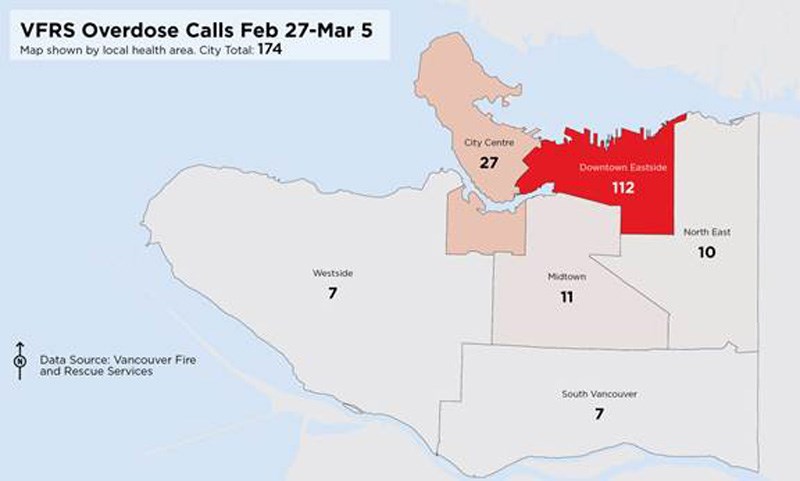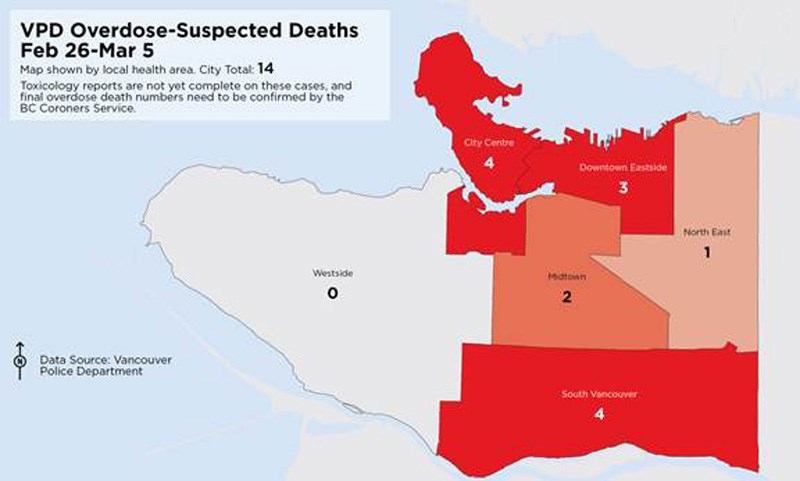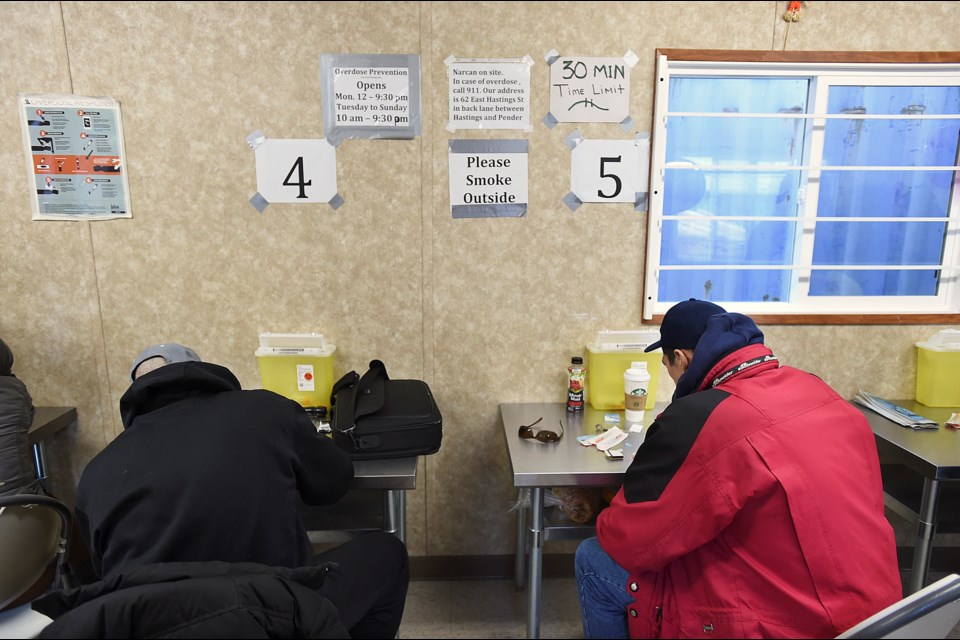More people died of a suspected drug overdose in South Vancouver and the city centre than in the Downtown Eastside over a recent eight-day period, according to new statistics released by the City of Vancouver Thursday.
Data from Vancouver Fire and Rescue Services and the Vancouver Police Department shows that eight out of 34 people responded to by firefighters in South Vancouver and the downtown city centre, which includes the West End, died of an overdose.
For that same eight-day period between Feb. 26 and March 5, firefighters responded to 112 overdoses in the Downtown Eastside – by far, the most in the city -- and three people died.
“The statistics are pretty telling that it’s not a problem that’s isolated to the Downtown Eastside,” said Capt. Jonathan Gormick, a public information officer for the fire department.
The total number of deaths recorded in Vancouver reached 14 over those eight days, including two in midtown -- which includes the Cambie corridor near Queen Elizabeth Park -- and one in the northeast part of the city.
Firefighters responded to a total of 174 overdose calls, including 11 in midtown, 10 in the northeast and seven on the West Side. The total number of drug deaths in February hasn’t been released but VPD Staff Sgt. Bill Spearn recently told the Vancouver Police Board that -- as of Feb. 23 -- 15 people died of a suspected drug overdose. Vancouver recorded 45 deaths in January.

Asked why the Downtown Eastside saw fewer deaths than other areas of the city, Gormick said the prevalence of the overdose-reversing drug naloxone in the community has had a measurable effect.
As well, Vancouver firefighters have used naloxone for more than a year and administered it 190 times to date. Gormick said the majority of its usage has been in the Downtown Eastside, where many drug users wear naloxone kits on their belts.
“It is so prevalent down there,” he said of the community which is home to drug injection rooms, needle exchanges and drug users’ associations. “Virtually, everyone has a kit. Everyone in the [single-room-occupancy hotels] knows where the kits are, what rooms they’re in. That’s really the only thing that has stopped this from becoming an exponentially higher tragedy.”

That level of education in the Downtown Eastside about naloxone and campaigns for drug users to not use alone haven’t necessarily reached outlying areas of the city or rural areas, said Gormick, noting some users fear calling 9-1-1.
“Which sometimes leads to a death,” he said. “Using [in the Downtown Eastside] doesn’t carry the same stigma it does maybe on the south slope of Vancouver.”
The VPD has a policy where it does not respond to overdose calls unless someone dies. The department implemented the policy several years ago to send a signal to drug users that they won’t be arrested if they call 9-1-1.
More than 200 people died in Vancouver last year of a drug overdose. Drug deaths are now among the top-10 causes of death in B.C., according to data from the Vital Statistics Agency.
@Howellings



